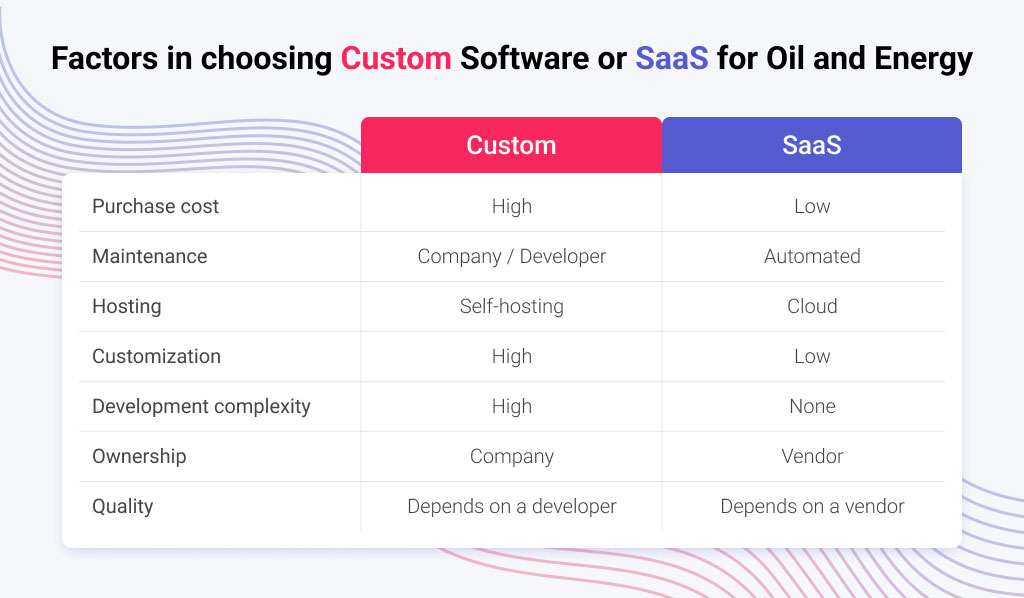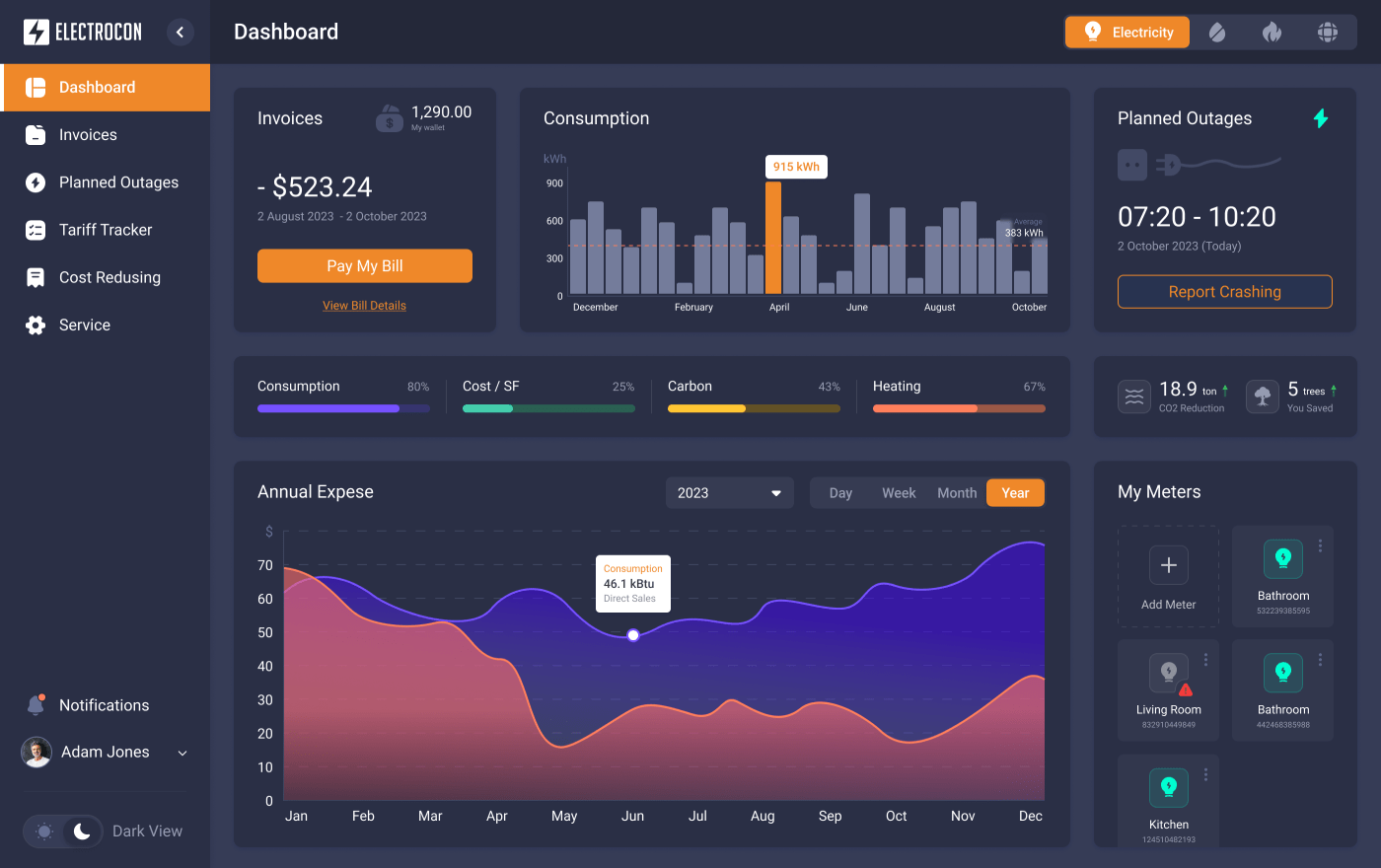Summary
In the U.S., the Oil & Energy industry is like navigating a maze, it is super complex and tightly regulated. The project management process is tough, and teams have to juggle massive distances, work with legacy systems, and deal with all sorts of safety and environmental rules. However, the industry is growing nonetheless. Thus, according to GlobeNewswire, the global Oil & Gas Data Management market was valued at approximately $19.0 billion in 2023 and is expected to grow to $60.3 billion by 2030. This expansion of the oil and energy sector is fueled by several key factors:
- the growing adoption of digital solutions for energy companies,
- a surge in demand for real-time data analytics,
- and continuous advancements in cloud computing and artificial intelligence (AI) technologies.
To make things run smoother and to be able to keep up with the demand, a lot of companies turn to SaaS project management tools, hoping to fix the issues. But here’s the catch: choosing off-the-shelf solutions may fail your plans. Such software-as-a-Service (SaaS) systems can cause inefficiencies, security headaches, and a ballooning budget. So, let’s break down why these tools struggle in the oil and energy world and how custom software for the oil industry can actually be the game changer.
The Problem: Why Off-the-Shelf SaaS Doesn’t Work for Oil & Energy Projects
While ready-made oilfield project management tools have proven effective in many industries, they often fall short in the highly specialized world of oil and energy. This sector has unique operational, regulatory, and technological requirements that generic SaaS tools simply weren’t designed to handle. As a result, many businesses can encounter some issues.

1. One-Size-Fits-All Software Lacks Industry-Specific Customization
One of the main issues is the complexity of oil and gas operations. The companies usually deal with vast, geographically dispersed teams, remote locations, and systems that often span decades. Off-the-shelf SaaS solutions typically aren’t built to cater to these complexities, but more appropriate for industries with far simpler workflows. Trying to adapt them to the oil and gas digital transformation can lead to significant inefficiencies. They may lack the specialized features needed to manage various critical aspects of the industry, like risk assessment, downtime tracking, asset-intensive scheduling, and regulatory compliance (OSHA, EPA, NERC, FERC).
What do our clients say?
As one of our clients put it, “It feels like half of my time I spend trying to fix issues with redundant data. It’s not exactly something I enjoy dealing with.”
These frustrations arise because the software doesn’t support the complexities of their work. Custom energy project management software, however, can be tailored to address the specific challenges our clients face, allowing them to streamline their operations and avoid inefficiencies that come with generic tools.
Alternative:
In this case, custom software for the oil and gas industry can be built from the ground up, fully aligned with the unique workflows, compliance requirements, and operational complexities of oil and energy projects.
2. Poor Integration with Legacy Systems and Field Equipment
The struggle of integrating new software with legacy systems is something many of our clients in the oil and energy sector face regularly. Their operations often rely on systems that have been in place for decades, and getting new tools to work with these old platforms can feel like trying to fit a square peg into a round hole.
The oil and energy sector often relies on older technologies, such as SCADA (Supervisory Control and Data Acquisition), ERP (Enterprise Resource Planning), and GIS (Geographic Information Systems), which are critical for day-to-day operations. Off-the-shelf SaaS solutions are often not flexible enough to integrate seamlessly with these legacy systems, causing siloed data, workflow disruptions, and delays in decision-making. As a result, companies often end up struggling with a whole set of enterprise SaaS limitations.
What do our clients say?
One of our customers described the issue this way: “We’re constantly re-entering the same data into multiple systems, and it’s a mess. It’s hard to get things done when the data doesn’t flow properly.” The result is manual workarounds, inefficiencies, and a higher risk of errors.
Alternative:
Custom software for the oil industry offers the flexibility to integrate seamlessly with the outdated existing systems and field equipment, helping our clients to maintain smoother workflows, reduce data silos, and improve overall operational efficiency. It’s a good way of allowing for better operations in case there are no resources for the development of a brand new system from scratch.
Read Also Optimizing Field Operations: The Role of Workforce Management Systems in Energy and Utilities
3. Regulations and Compliance Risks with Cloud Storage
Additionally, the regulatory landscape in oil and energy is far more stringent than in most other sectors. Off-the-shelf SaaS solutions often fail to meet the strict regulatory requirements. With data being stored in the cloud, the risks of falling out of compliance or experiencing security breaches are higher than ever.
Energy companies must comply with numerous federal and state regulations, such as OSHA standards, EPA guidelines, and safety mandates from agencies like NERC and FERC. With the ready-made solutions for the energy sector, it becomes hard to stay on the right side of the law. Eventually, many of our customers faced the need to manually incorporate these requirements into their workflows.
What do our clients say?
As one customer put it, “It’s crazy how many times we end up re-entering the same data into different forms or systems. You would think this would be an easy fix, but it’s a nightmare.” This repetitive process opens up the risk for errors, which can have serious implications when it comes to regulatory compliance and security.
Alternative:
By opting for oil and gas technology solutions, our clients gained more control over their data security and can now ensure that their systems are designed specifically to meet the compliance standards required in the oil and gas sector. Also, a self-hosted or hybrid system offers full control over data storage, encryption, and user access, ensuring the highest levels of security and compliance.
4. Performance Issues in Remote and Harsh Environments
Lastly, many off-the-shelf SaaS solutions are built with the assumption of a stable internet connection and continuous cloud access. However, oil and gas operations often take place in remote or harsh environments like offshore rigs, drilling sites, and refineries, where the challenges of connectivity and durability can severely impact the performance of off-the-shelf software. In such conditions, relying on a SaaS tool that requires constant internet access can cause serious delays, preventing teams from accessing or updating critical project data when it’s most needed.
What do our clients say?
For our customers working in these extreme conditions, many tools simply aren’t up to the task. One client shared their experience: “Trying to use standard software in the field was like trying to run a race in flip-flops. It wasn’t built for the job.” Delays can be costly, if not dangerous.
Alternative:
Oil & Gas custom software solutions can be designed to work optimally in these conditions, ensuring that the system performs reliably no matter how challenging the environment, helping the workers maintain operations without unnecessary interruptions or life-threatening situations. In general, a hybrid or offline-first approach ensures that field teams can access and update critical project data even in low-connectivity areas, enhancing operational continuity.
5. Rigid Pricing Models and Long-Term Costs
Off-the-shelf SaaS solutions often use per-user pricing, along with hidden fees that can quickly escalate. Over time, companies find themselves locked into expensive contracts with vendors that limit flexibility.
Oil and gas businesses are often frustrated by the unpredictable costs that come with off-the-shelf SaaS solutions. With rigid pricing models, hidden fees, and costs for additional users or storage, the expense can quickly spiral out of control, especially when dealing with large-scale operations.
What do our clients say?
As one of our clients pointed out, “The irony is that while the industry relies so heavily on data and business analytics, nothing works well together. People wonder why we still rely on Excel — it’s one of the few tools that lets us manage data in a somewhat organized way without endless costs.”
Alternative:
Custom software development eliminates per-user fees and provides greater long-term cost efficiency. With complete ownership of the software, energy companies can evolve the system to meet their changing needs.
With custom software, our clients can enjoy more predictable pricing based on their specific needs, without paying for unnecessary features or dealing with unexpected fees. This flexibility allows them to optimize their budgets while ensuring long-term value.
Read Also How to Build an Excel Add-in With React
In summary, while off-the-shelf SaaS tools may work for certain industries, they are often a poor fit for the oil and energy sector. The combination of complex workflows, stringent regulations, integration issues, and performance constraints in remote locations makes these generic solutions more of a burden than a benefit.
The Solution: Custom Project Management Software Built for the Energy Sector
For companies seeking a tailored project management solution, leveraging enterprise-grade UI components, such as Webix and DHTMLX, offers key advantages that off-the-shelf solutions simply can’t provide. These tools provide the flexibility and customization needed to address the unique demands of the oil and gas industry.
By utilizing proven, enterprise-grade tools, like Webix and DHTMLX, oil and energy companies can develop powerful, scalable project management solutions faster and without the limitations of open-source alternatives.
Customizing digital solutions for energy companies with Webix and DHTMLX allows businesses to create software that integrates seamlessly with existing systems, such as SCADA, GIS, and ERP platforms, ensuring smoother data flow and eliminating the need for redundant data entry. Choosing custom oil and gas technology solutions over the fully ready-made options in the “Custom vs. Off-the-Shelf SaaS” battle brings a plenty of benefits for businesses in the industry:
- Proven Reliability: Used by many of our clients, these tools proved to be trusted and reliable for high-stakes, complex oil and energy projects.
- Cost-Effective Development: Instead of spending valuable time and budget on tweaking open-source solutions, customized software provides feature-rich, ready-to-use components that accelerate development.
- Advanced Functionality: Custom systems with JavaScript UI framework offers sophisticated project scheduling, resource management, and real-time updates, which is perfect for oil and energy projects that span multiple phases.
- Seamless Integration: JavaScript UI components can be integrated smoothly with custom-built applications, ensuring they work well with existing systems and infrastructure.

Source: Custom Energy Management Software (+Clickable Prototype)
At the end of the day, the oil and gas industry is built on precision and efficiency. By leveraging custom software, companies can ensure they’re equipped with the right tools to tackle today’s challenges and tomorrow’s growth, making the most of their data, resources, and budgets. Choosing custom solutions isn’t just a smart investment, it’s the key to long-term success in a fast-evolving industry.

The XB Software team exhibited a perfect blend of professionalism and friendliness. The team was approachable, understanding, and genuinely interested in our project’s [web-based B2B software designed to streamline communication and enhance relations between companies in the oil and gas industry] success.
Conclusions
In the highly specialized and complex world of oil and energy, off-the-shelf SaaS solutions simply don’t cut it. The unique operational, regulatory, and technological challenges faced by the industry demand tools that can be tailored to fit specific needs, something generic software struggles to deliver. Custom project management solutions, developed with the flexibility of tools like Webix and DHTMLX, offer a much-needed alternative.
By choosing custom software over ready-made SaaS solutions, oil and gas companies can streamline their workflows, enhance integration with legacy systems, and better address regulatory compliance requirements. What’s more, these solutions provide a more cost-effective, scalable, and reliable approach to project management in remote and high-risk environments. So, if you need a system that will perfectly fit your business’ needs, please contact us, and our team will be glad to assist you.